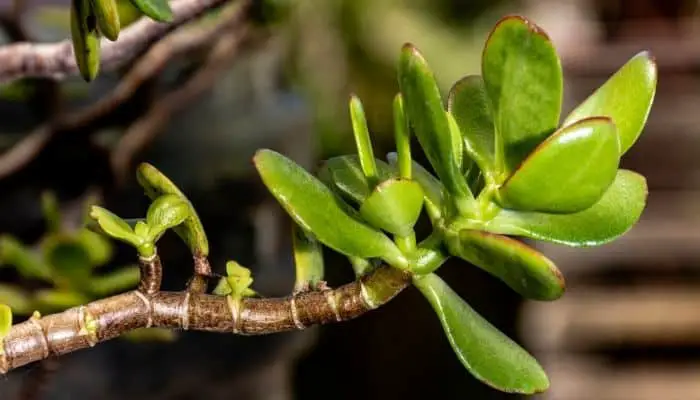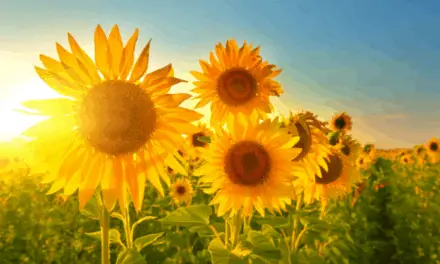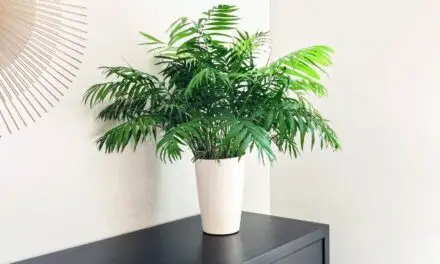It’s normal for a jade plant to drop older leaves, but if your jade is dropping new leaves or losing leaves excessively, it is time to look a bit closer at what’s going on.
Table of Contents
Why Is My Jade Plant Dropping Leaves?

Your jade plant is dropping leaves because it is either not being watered properly, too cold, being attacked by pests, or getting the wrong amount of light.
Jades may also shed leaves as summer turns to winter and light levels decrease.
Some people choose to use fluorescent lighting during winter.
Try to provide a full spectrum of light for your plant by using a two-bulb fixture, one cool-white bulb, and one bulb specifically for plant growth.
And don’t forget to change the bulbs as they can significantly decrease in intensity after about a year of prolonged use.
What To Do If Your Jade Plant Is Dropping Leaves
If your jade plant suddenly starts losing leaves, you’ll want to test the soil to see if it’s too wet or dry, check that your plant is getting the right amount of light, check that it’s in a temperature range that it likes and that it’s not being attacked by pests.
Check The Soil
An easy fix for your jade is to give it more water.
Jade plants that aren’t being watered enough often drop their leaves quite quickly.
If the leaves are shriveling before falling off then check the soil with your finger.
If the soil is dry, that is a good sign that the plant has been underwatered.
If the soil feels even a little bit moist hold off on watering for a day or two.
If it is too wet, let it dry out before watering again.
Your plant will need more water in the summer months when it is growing.
In the winter, it will still need to be watered but will require significantly less.
Related Article: Why Are My Jade Plant Leaves Curling Down? (Explained)
Check the Air Temperature
These plants like a steady temperature and if it dips too low or rises too high, your jade plant may begin to drop leaves.
In summer, jade plants like a room temperature of 65° to 75°F.
But they like it a little cooler at night and in winter, with temperatures around the 55° to 65°F mark.
Your home may be a little too cool or a little too warm for a jade plant.
Try adjusting your thermostat.
Cool temperatures tend to be a more common culprit than warm temperatures, so start by turning up the heat (just a little).
Monitor Sunlight Exposure
Mature jade plants should get at least 4 hours of full sun each day while young jades should get lots of bright indirect sunlight.
You might have to move your jade a couple of times to determine if it is getting an appropriate amount of light.
If you notice dropping leaves and think a lack of light is the problem, find a bright spot near a window to place your jade.
Get Rid of Pests
You might notice that your jade plant has a pest infestation, which is more likely to happen in a greenhouse setting than in your living room.
White patches on the leaves are one indication that you might have an insect problem.
If your jade looks unhealthy and you notice insects, rubbing alcohol is an effective insecticide.
Put it in a spray bottle and spritz the plant or rub it on the leaves.
How to Prevent Your Jade Plant Losing Leaves
A basic understanding of your plant’s care will help ensure it stays healthy.
Water Less In The Winter
In the spring, summer, and fall months you can saturate the soil of your jade when you water it.
The plant will be actively growing and can handle the saturation.
However, you will need to wait for the top two inches of soil to dry out before watering again.
In the winter, you can avoid overwatering your jade by putting water in a spray bottle and lightly spraying it.
You will know when it is not getting enough water because the leaves will start to shrivel.
With too much water, the leaves become limp.
Provide Adequate Light And Monitor Your Thermostat
Light and temperature both affect the health of your plant.
Mature jade plants require a few hours of direct sunlight each day.
However, be careful not to place it too close to a window, as it might be susceptible to drafty air.
You will want to keep your thermostat between 55- and 75-degrees Fahrenheit to provide the right temperature for your jade.
Protect Your Jade From Pests
Common culprits of a pest infestation are mealy bugs, aphids, and spider mites.
The most effective way of controlling pests is to check your plant regularly and get rid of them as you see them.
If you want to take precautions, there are a couple of things you can try.
Lightly spritz your plant with soapy water on occasion to help prevent pest infestation.
If your plant is in a greenhouse, releasing ladybugs will help to control the pests before they become a problem.
Final Thoughts
If you notice your jade plant dropping leaves excessively, check the soil first for watering issues, then check to see if it’s getting enough light and warmth and that it is not being attacked by pests.
The jade plant is nicknamed “lucky plant”, and some cultures believe its presence brings prosperity.
Taking good care of your jade is easy, so a little effort could bring a lot of luck!




